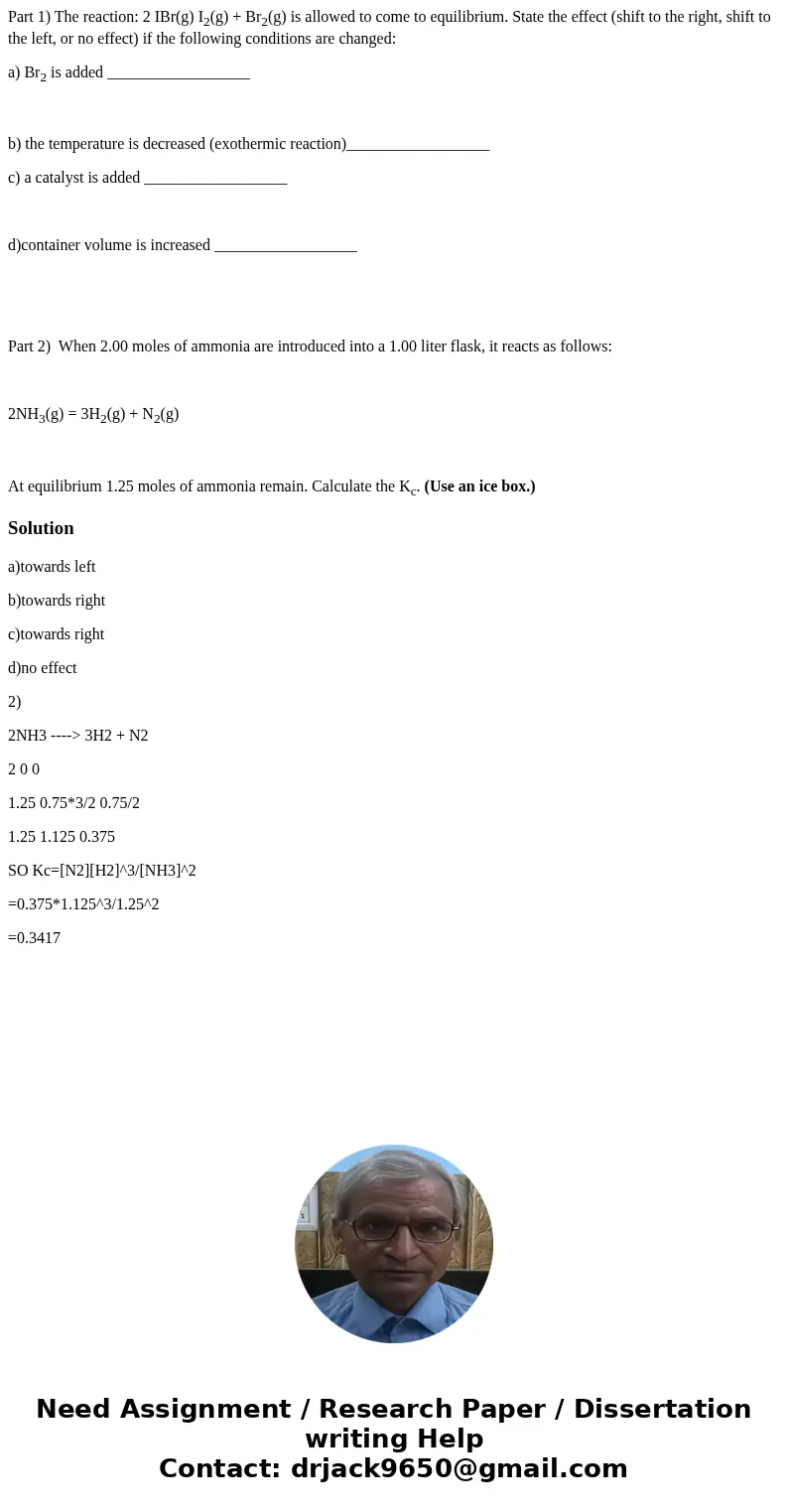Part 1 The reaction 2 IBrg I2g Br2g is allowed to come to e
Part 1) The reaction: 2 IBr(g) I2(g) + Br2(g) is allowed to come to equilibrium. State the effect (shift to the right, shift to the left, or no effect) if the following conditions are changed:
a) Br2 is added __________________
b) the temperature is decreased (exothermic reaction)__________________
c) a catalyst is added __________________
d)container volume is increased __________________
Part 2) When 2.00 moles of ammonia are introduced into a 1.00 liter flask, it reacts as follows:
2NH3(g) = 3H2(g) + N2(g)
At equilibrium 1.25 moles of ammonia remain. Calculate the Kc. (Use an ice box.)
Solution
a)towards left
b)towards right
c)towards right
d)no effect
2)
2NH3 ----> 3H2 + N2
2 0 0
1.25 0.75*3/2 0.75/2
1.25 1.125 0.375
SO Kc=[N2][H2]^3/[NH3]^2
=0.375*1.125^3/1.25^2
=0.3417

 Homework Sourse
Homework Sourse